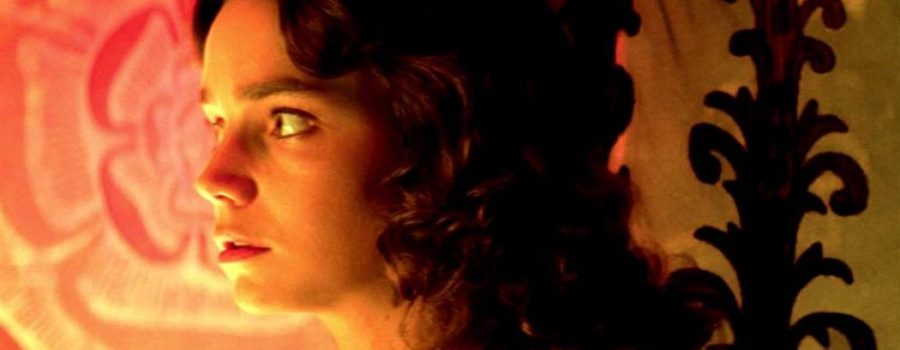[Published at Film Inquiry] Auguste Marie Louis Nicolas and Louis Jean Lumière were pioneers of the film industry in the 1890s. They were among the first to create moving pictures, and the first people to conceive of the idea that one can use film as a mass medium. In fact, La sortie de l’usine Lumière à Lyon (Workers Leaving the Lumière Factory, 1895) is considered to be the first film ever made. Though each of their films comprised of only 17 meters of celluloid, equating from around 40 to 50 seconds per film, they arguably remain the purest form of realism in any facet of art today, displaying candid portrayals of working class France. Referred to as actualités, or actuality films, a non-fiction film genre widely regarded as a precursor to modern documentaries, these French films would also influence the Italian Neorealism movement some 40 years later.
The storied past of Italian cinema is something of a legend nowadays. Italy holds the Academy of Motion Pictures and Sciences record for most Best Foreign Language Film Oscars, tallying 14 since 1956. Have you ever wondered why European cinema, particularly Italian cinema, often seems so stylistically different than American cinema, but couldn’t find anything tangible to vocalize the reasons behind this common sentiment? Ultimately, it comes down to an inherent difference of desire for expression and desire for financial gain.
A Brief Contextual History of American and Italian Cinema
American filmmaking is as much a vital industry, an integral mechanism of the economy as any industry. American cinema was built upon capitalism, and in a society promoting greed, Hollywood films have been historically money-driven. In the 1930s, during the Great Depression, escapism was what sold the most tickets. Films like Scarface (1932) and King Kong (1933) birthed the Golden Era of American cinema, before it was eventually warped into a facade by the American populace. Americans began placing divine importance on actors and filmmakers, a trend that led to the celebrity-obsessed culture we live in today.

Around the same time period, the emergence of Italian cinema essentially represented the complete opposite of American cinema. Italy was under Benito Mussolini’s oppressive, fascist regime on the brink of WWII. Italy was ground zero during Hitler’s reign of terror. While American film’s became more propagandistic in the 1940s, Italian cinema revived the essence of the Lumière Brothers’ actualités. Italian filmmakers that emerged during the war and post-war were not profit-driven; they were instead focused on exposing the harsh truths around them, creating a movement that would become known as Neorealism.
Italian Neorealism: Rossellini, De Sica, Visconti
Italian Neorealism is regarded as the beginning of the Golden Era of Italian cinema. Inspired by the realist movement, its literary predecessor a generation prior, and coinciding with its literary revival, the prominent voice of which was novelist Italo Calvino (Il sentiero dei nidi di ragno, The Path to the Nest of Spiders, 1947), Neorealism was a movement that aimed to provide an unadulterated window into the harsh truths that its various artistic contributors observed around them. In order to accomplish this, filmmakers would often hire untrained, nonprofessional actors in secondary, sometimes major roles to capture this sense of realism. They made it a point to never use sets, but rather real settings with real people in the background to further this effect. Films of this era often focused on themes of poverty, classism, living under an authoritarian regime, and the effects of war and post-war society.

The movement was founded by group of film critics (film critics, go ahead and take an unashamed hubristic moment and pat yourselves of the back), the leader of which was Luchino Visconti. Visconti and his band of writers and filmmakers began expressing their malcontent with society in the publication Cinema, whose editor-in-chief was none other than Vittorio Mussolini, son of Benito Mussolini. In any authoritarian regime, it is common for the government to oppress the media. After these artists were censored, they looked to film to give their honest observations a deeper impact.
Visconti’s most essential Neorealist film was 1948’s La terra trema (The Earth Trembles). The film’s pressing sociopolitical commentary about the ill-effects of capitalism on the working class fishermen in Sicilia earned it the International Award at the La Biennale di Venezia (Venice International Film Festival). The film featured a completely nonprofessional cast of genuine Pescatori Siciliani (Sicilian fishermen), struggling to support their families as the wholesale fishing industry emerged. Visconti, like most voices in Neorealism, was willing to go to great lengths to spread his truth to the masses, selling his mother’s jewelry and his home in Rome to complete funding of the film.

Some consider Visconti’s 1943 film, Ossessione (Obsession), based on the novel The Postman Always Rings Twice by James M. Cain, to be the first Neorealism film (it was remade as an American film three years later, a trend that would only become more pervasive in Hollywood). However, Roberto Rossellini’s Roma città aperta is the first fully-realized vision of the genre. Rossellini was not only one of the founders of the Italian Neorealist movement in film, but he is also considered to be the father of Italian cinema. His film won the Cannes’ Grand Prize, and a young Federico Fellini was nominated for Best Adapted Screenplay at the 19th Academy Awards; Rome, Open City, as it is referred to in America, put Italian Neorealism on the map, featuring shocking scenes of torture, abuse, violence, and an unsettling execution scene to highlight the immediate aftereffects of Nazi occupation of Rome.
Rossellini rode the coattails of Roma città aperta‘s critical success, releasing Paisà in 1946, for which he and Fellini were nominated for Best Writing, Story and Screenplay Oscar at the 22nd Academy Awards. During these films, Rossellini took Fellini under his wing, developing a “Maestro e’ Studente” relationship, respectively. Paisà featured a series of six vignettes covering the Allied invasion of Italy, beginning in July 1943 in Sicilia to winter 1944 in Venezia, essentially geographically spanning the entire country.

Perhaps the most famous Italian Neorealist film is Vittorio De Sica’s Ladri di biciclette, released in 1948. The film received the Honorary Award Oscar at the 22nd Academy Awards, voted by the Academy Board of Governors as the most outstanding foreign language film released in the United States. Cesare Zavattini narrowly missed winning the Oscar for Best Writing, Screenplay, and won Best Foreign Film at the Golden Globes and BAFTAs. Ranked 95 on IMDb’s list of the 250 best films of all time, The Bicycle Thieves, as it was called in America, told the story of a bicycle delivery man and his son on a quest to find his stolen bicycle. The simplistic story explored complex issues of classism and the uneven distribution of wealth between the upper and working class in the post-WWII era. Lamberto Maggiorani and Enzo Staiola as the father and son give arguably the most iconic performances of the Neorealist movement.
The Continuation of the Golden Era and Surrealism: Fellini, Loren, Mastroianni
With a total of 12 Academy Award nominations, Federico Fellini is undoubtedly the most famous Italian director in the history of cinema. As Fellini studied under Rossellini, he developed his own style, eventually transitioning from a screenwriter to a director in the 1950s. He wrote and directed several Oscar-nominated films, including I Vitelloni (1953), La Strada (The Street, 1954) starring the internationally famous Anthony Quinn, and Le notti di Cabiria (The Nights of Cabiria, 1957), the latter two of which won the Oscar for Best Foreign Language Film. These films established Fellini’s directorial voice, one characterized by his fixation of combining the essence of dreams with real life, contrasting the realism of his collaboration with Rossellini, but equally as politically charged.

Fellini grew up in an Italy ruled by the oppressive Mussolini and Pope Pius XII (arguably the Vatican’s most controversial pope), where he sought refuge in his own imagination. Stylistically rooted in dreamlike fantasy, his films contained an element of surrealism. This style came to complete fruition through Fellini’s most iconic works, La dolce vita (1960) and 8 1/2(1963), the latter of which won two Oscars including Best Foreign Language Film. Most modern, post-modern, and contemporary directors have 8 1/2 and/or La dolce vita somewhere in there list of favorite films. On top of their international influence, these films also marked the emergence Marcello Mastroianni, and their success catapulted him into stardom.
Mastroianni would become one of Italy’s most iconic actors. Very much familiar with neorealism, having collaborated several times with Vittorio De Sica, Mastroianni was familiar with the shifting sociopolitical landscape surrounding him and the subsequent shifting style of cinema. He began his iconic collaborative stretch with Sophia Loren in Peccato che sia una canaglia (Too Bad She’s Bad, 1954), starring alongside De Sica.

Mastroianni and Loren starred together again in the romantic comedy La fortuna di essere donna (What a Woman!, 1956). Loren would go on to star in countless mainstream Italian films, winning the Oscar for Best Actress in a Leading Role in De Sica’s post-Neorealist exclamation point, La ciociara (Two Women, 1960), as a mother struggling to protect the innocence of her daughter in a WWII Italy. It was the first and only time until 1997 that an actor won in a leading category in an expressly Italian performance. Keeping reading to find out who did it nearly 40 years later!
Loren starred in 1962’s Boccaccio ’70, an anthology film combining the collaborative efforts of almost every major voice of the Italian Neorealist movement of the past with the new emerging cinematic style of stylistic expressionism. It was at once Neorealism’s swan song and a brave look forward in time toward exploring the unknown filmmaking landscape. Following the structure of 14th century Italian poet Giovanni Boccaccio’s Decameron, it told four tales, directed by Fellini, Visconti, De Sica, Mario Monicelli (Casanova ’70, 1965, for which Monicelli was nominated for the Oscar for Best Writing, Story and Screenplay – Written Directly for the Screen), and included writing contributions from Italo Calvino, among other prominent screenwriting voices such as Zavattini. It was one of the first Italian films to explore the very-near-dystopian-future trope, and challenged common societal and gender expectations.

Throughout Mastroianni’s three-time-Oscar-nominated career, one of his standout performances is ironically one of his more lesser known films, Il bell’Antonio (1960). Decades ahead of its time, the film gave an unprecedented sympathetic glimpse into the life of a closeted homosexual man, trying to live up to the conservative, Catholic standards set by Italian society. Scripted by Pier Paolo Pasolini, the film marked the director’s first foray into sexual exploration and pushing societal boundaries through film. Pasolini was openly homosexual and faced public ridicule fearlessly; his experiences as a homosexual in a repressive society strengthened his resilience, determination, and artistic creativity.
The Dark Ages: Pier Paolo Pasolini – A Tortured Genius
Pier Paolo Pasolini’s work as a filmmaker in the modern period of Italian cinema is not by any means a “dark ages” period in the sense of losing one’s art, knowledge, and culture, but, contextually, it is one of Italy’s most unpalatable cinematic movements. Filled with violence, hyper-sexualization, rape, sodomy, and everything in between, Pasolini’s films led viewers to believe that he was almost as twisted as their content was.
Consider Pier Paolo Pasolini the Lars von Trier of Italian cinema in the 1960s and 1970s, except he was equally distasteful and offensive in person as his later film content would suggest. Throughout his life, Pasolini was involved in 33 lawsuits against him, consistently charged and eventually acquitted with “public disgrace,” “foul language,” “obscenity,” “pornography,” “contempt of religion,” “contempt of the state,” etc. Sharing certain communist ideologies, Pasolini sympathized with the proletariat, rebuked the bourgeoisie, and critiqued the ill-effects of the conservatism that Catholicism begot. He was often more than outspoken in the public spectacle.
Pasolini made a second cinematic pass at Boccaccio’s Decameron, adapting nine stories from his epic, titling it Il Decameron (1971). One of his more famous works, the film won the Silver Berlin Bear Special Jury Prize at the Berlinale (Berlin International Film Festival). Hardly among his more controversial works, the film still had its tongue firmly planted in cheek, poking fun at Catholicism and the constructs of religion in general. It was the first of a thematic trilogy referred to as the Trilogy of Life, with I racconti di Canterbury (The Canterbury Tales, 1972) and Il fiore delle mille e una notte (Arabian Nights, 1974) rounding out the three films.

The success of this trilogy, widely regarded as a masterpiece in its entirety, spawned a trend of Italian sexploitation in media, pop-culture, and film. This infuriated Pasolini, who declared the purpose of his Trilogy of Life was to underscore the sacredness of the human body. In his mind, he had failed in his message. Like von Trier, Pasolini’s anger morphed into a self-crusade, an obligation to shock the world. As a response to what he saw as a backfiring of his original trilogy, he made Salò o le 120 giornate di Sodoma (Salò, or the 120 Days of Sodom) in 1975, widely considered among film historians to be the most controversial film of all time.
Based on the Marquis de Sade’s twisted novel of sexual horrors and inspired by poet Dante Alighieri’s Inferno in its structure, Salò displayed shocking sexual and demeaning acts including sexual assault, the forced ingestion of human filth, and genital mutilation committed against underaged boys and girls. It was intended as an allegory for the atrocities committed during the fascist Italian regime of the 1940s. However, in the eyes of filmgoers, government censorship boards, and critics alike, its sociopolitical commentary did not excuse the extremism of the content portrayed in the film.

Unfortunately but fittingly, Pasolini was murdered in what is largely believed to be a mafia-style revenge killing. He was run over several times by a car, his testicles crushed by a metal rod, and his body partially burned using gasoline post-mortem. Though additional materials have emerged over the last 40 years questioning the exact circumstances surrounding his death, the results remain inconclusive.
Italian Giallo and the Rise of Dario Argento: 180 Degrees from Neorealism
Perhaps a more palatable portrayal of violence emerged through the Italian Giallo sub-horror genre. For years, Italian films had contained essential elements of cinematic horror, mostly through their reflection of real-life events, but Giallo was the first official Italian horror movement that took the world by storm. Its founder, Dario Argento, began his career as a film critic (again, film critics, take another unashamed hubristic moment to pat yourselves on the back… we know a good thing when we see one).
In his first venture into cinema, Argento co-wrote Sergio Leone’s American spaghetti western, C’era una volta il West (Once Upon a Time in the West, 1968) along with Bernardo Bertolucci. After the success of this film, Leone found his niche in American western films, and Argento found his.

The first Giallo film ever made was his L’uccello dalle piume di cristallo (The Bird with the Crystal Plumage, 1970), which won Best First Feature at the Italian Golden Globes. Using the positive momentum to fuel his creativity, Argento finished off what he would proclaim his “Trilogia animale,” or “Animal Trilogy” with Il gatto a nove code (The Cat o’ Nine Tails, 1971) and 4 mosche di velluto grigio (Four Flies on Grey Velvet, 1971). These earlier works were scored by Italy’s greatest film composer, Ennio Morricone, a connection Argento made through his collaboration with Leone.
Argento then made what is predominantly considered to be the greatest Giallo film ever made, though this is arguable, with Profondo rosso (Deep Red, aka The Hatchet Murders, 1975). The film featured brutally unique deaths, and introduced the world to the Italian progressive rock band, Goblin. Goblin would go on to compose several scores for Argento throughout his career, providing pulsating, electronic soundscapes that add to the intensity of his films.
In my humble opinion, Argento’s next film, Suspiria (1977), is the most innovative horror film ever made. Featuring Goblin’s iconic score and venturing away from the murder mystery plot elements of the prior iterations of the Giallo genre, this time exploring supernatural elements, Suspira is a masterclass in suspense, body horror, and primal, subliminal fear. A film about an American ballet student who transfers to a prestigious dance academy in Germany, only to find out that the academy is not what it seems, it was the first of Argento’s Le Tre madri (The Three Mothers) Trilogy, which was rounded off by Inferno in 1980 and La Terza madre (The Mother of Tears, 2007), literally translating in English to “the third mother.”

Stylistically, Suspiria represented the purest foundational elements that were essential to the Giallo genre. Through the costume design, production design, colorful set pieces, lighting, and cinematography, it emphasized extremely vivid, almost neon primary colors—particularly red—which makes the violent scenes simultaneously incandescent and surrealistic. Argento’s intention was to create a purposefully unrealistic, nightmarish vision, which he overwhelmingly achieved. Interestingly, and similarly to Leone and Morricone’s creative collaborations, Goblin composed the score before filming, so Argento built his vision around the sense of sound, before anything else (aside from what he imagined in his mind).
At this point in Italian cinema, both the artistic intentions and stylistic elements of Italian cinema had completely changed from the era of Neorealism. Argento founded a movement that redefined and expanded both Italian cinema and the barriers that confined international horror cinema. From Suspiria onwards, though primarily less focused on the supernatural other than Argento’s The Three Mothers Trilogy, Giallo emphasized stylistic elements over plot development in its films. A lesser known credit of Argento’s is his work on master of zombie horror George A. Romero’s Dawn of the Dead in 1978. Argento produced, contributed to the soundtrack of, and edited the iconic zombie masterpiece. He also heavily influenced post-modern American slasher films.
The Emergence of Roberto Benigni in Post-modern Italian Film
Though Argento was cheeky enough to poke fun at himself and his own genre in all of his films, there was a comedy heavily lacking in Italian cinema until the arrival of comedian and actor Roberto Benigni. Benigni was an international star, especially in America (ironically, despite being a communist party supporter). He drew worldwide attention with his work in JimJarmusch’s Down By Law in 1986, starring alongside musician Tom Waits. Jarmusch, heavily influenced by Italian cinema, particularly Neorealism, let the scenes between Benigni and Waits’s naturalistic dialogue and interactions drag on, and reveled in the minimalist settings of the film.

Benigni made another film with Jarmusch, Coffee and Cigarettes in 1986, initially the first of a series of shorts that would be released as a feature-length film in 2003. After his work with Jarmusch, and before he moved behind the camera, Benigni starred in Son of the Pink Panther, a critical disaster. Never one to give up, Benigni became a triple-threat, writing and directing his own comedies, most notably Johnny Stecchino (Johnny Toothpick, 1991). Benigni was hilarious, utilizing his putty-like face to exaggerate expressions, channeling the physical comedy of a bygone era once ruled by Charlie Chaplin. However, film critics still didn’t take Benigni seriously.
It wasn’t until La vita è bella (Life Is Beautiful, 1997), that Begnini found his voice. As a Jewish person whose family survived the Holocaust, part of Benigni’s past is clouded in tragedy. He used this pain and combined it with his aptitude for flawless, Buster Keaton-esque clumsiness and storytelling ability to make one of the seminal films about the genocide that slaughtered 12 million people, including 6 million Jews. La vita è bella was funny, invigorating, suspenseful, and heartbreaking. In the story, Benigni’s character has to protect his child’s innocence, and in doing so, he creates a fantasy so that his kid can cope with living in an internment camp. This film combined Neorealism, Surrealism, and the physical comedy likenesses of the aforementioned Chaplin and Keaton; it was very much a product of its own country’s real-life and cinematic history.

Earlier in this article, it was mentioned that Sophia Loren was the only actor to win an Oscar in a leading role solely in Italian until 1997. Those of you who made it this far, bravo! and thanks for your interest in Italian cinema! Well, here we are in 1997, and what a glorious year it was for Italy at the Academy Awards. La vita è bella won three Oscars, including Best Foreign Language Film, Best Music, Original Dramatic Score (Nicola Piovani), and Roberto Benigni became the second actor to win an Oscar for a performance in Italian, winning Best Actor in a Leading Role.
Fittingly, Loren announced Benigni’s name when he won as “Roberrrrrrtooooooo!”, prompting one of the most famous moments in Academy history as Benigni leapt on top of the chairs, and proceeded to walk across them, stepping on people on his way towards the stage, his infectious, aloof demeanor rubbing off on the crowd as they roared in celebration and laughter.
Decades Ahead of Its Time: Italian Cinema’s Worldly Influence
Benigni wasn’t by any means the first Italian star to break into the international spotlight. Italian culture has been a subject of American filmmaking for decades, but Italian filmmaking has influenced international cinema since its inception, particularly American filmmaking. Argento’s Giallo work in the 1970s directly influenced John Carpenter’s Halloween, which, in turn, influenced the entire revival of the horror subgenre that is slasher. Fellini’s influence is often talked about, and more than covered in the context of history.

It has already been established that the first superfluous American remake was that of Visconti’s Ossessione. This is something that, particularly over the last three decades, has muddled Hollywood’s creative cogs, the need to remake every great foreign film, Americanizing its themes, characters, and culture. It’s the ideological carryover of a country built upon imperialism, founded on capitalism, and the idea to conquer and monetize anything that is within reach. Tomas Alfredson’s Swedish masterpiece, Let the Right One In didn’t need a shot-for-shot American remake, and Chan-wook Park’s Oldboy certainly didn’t need a Spike Lee revisiting.
What people may not know is that international cinema of the past has also subconsciously reemerged in the zeitgeist of contemporary American filmmakers. Since this article focuses on Italian cinema, let us focus on the influence Neorealism has had on subsequent decades of international filmmaking. Starting very early, in the context of post-modernism in film, with American filmmaker Jim Jarmusch and his aforementioned works, Down By Law and Coffee and Cigarettes in 1986, Neorealism began making its comeback.
Moving along to the 1990s, the French New Wave cinematic movement echoed that of Italian Neorealism’s, stylistically and thematically, as well as that of the American independent filmmaking movement, revived in the 1990s by Richard Linklater and Kevin Smith, and continued by Jim Jarmusch. Through their narrative structure and intentional pacing, Linklater’s Slacker and the Before Trilogy (Before Sunrise, Before Sunset, Before Midnight), Smith’s Clerks and Mallrats, and Jarmusch’s Ghost Dog: The Way of the Samurai are important additions to the American revival of Neorealism.

However, it is important to note that the sociopolitical landscape that the Americanized version of Neorealism was built out of was vastly different than that of Italian Neorealism. Italian Neorealism was far more politically charged, whereas Linklater and Smith’s work, especially, highlighted the vapid, existential boredom that characterized 1990s suburban America.
Italian Neorealism was based upon a mindset of political and class awareness. Contrarily, the American Neorealist iterations over the past 30 years carry a collective mindset of introspective self-examination and a more selfish, if you will, focus on personal fulfillment. Italian filmmakers had to battle poverty, censorship, and an authoritarian fascist regime, fueling the liberal communist support shared by Italian filmmakers over the next several decades. American filmmakers in the 1990s had the luxury of living among the suburban middle-class in a society obsessed with consumerism, where they had the privilege to choose their own subject matter more freely.
These films were also pillars in the American industry indie story arc that led to the birth of mumblecore, the most recent revival of Italian Neorealism. Just like Italy’s 70-years-ahead-of-its-time cinematic movement founded by Visconti and Rossellini, earlier mumblecore films included non-professional actors in real settings, a method meant to capture this sense of unadulterated authenticity.

However, again, whereas Neorealism was sociopolitically charged, mumblecore focuses more on dialogue and character interactions over plot, providing an intimate window into its characters’ interpersonal relationships. Historically, it makes sense that those films in Italy during WWII were made out of a collective anxiety, whereas mumblecore reflected sheer upper-class unconcern.
Although, recent iterations of mumblecore such as Joe Swanberg’s Win It All show that mumblecore is becoming more narratively cohesive and mature in content. Interestingly, one of the early voices of mumblecore, David Gordon Green (All the Real Girls, 2003), would eventually seek to remake one of the most coveted horror films of all time.
Guadagnino’s Suspiria Re-envisioning: The Rebirth of Giallo, or the Death of Remakes?
Although Giallo never officially died, Argento’s last entry into the genre he singlehandedly created and developed was the aforementioned La Terza madre, the last of The Three Mothers Trilogy. Since then, most recent homages to the genre include Nicolas Winding Refn’s The Neon Demon. Much like Argento’s Suspira, Refn’s latest directorial effort was a biting critique of a female-dominated industry, told visually through vibrant colors and shocking macabre images, and narratively through the nightmare-infused perspective of its female heroine. Its score by Cliff Martinez even emulates Goblin’s iconic Suspiria score.
Still, it is not a Suspiria remake. No, that’s been over 10 years in the making. Rumors of David Gordon Green eyeing Suspiria for a remake began around 2006. His name was officially attached to the remake in 2008, with Natalie Portman set to star. After difficulty of securing rights from Argento because of his creative protectiveness over this film, which is akin to one of his children, Green finally obtained the rights. However, Portman went on to star in Darren Aronofsky’s Black Swan (very much a Suspiria re-imagining in its own right), and Green kept delaying the project due to contractual obligations.
In 2015, the project ultimately found itself in the right hands with Italian director Luca Guadagnino when Green removed himself from the project. Guadagnino recently directed the highly acclaimed Call Me By Your Name, which debuted at Berlinale this year, and is set for wide release just before Suspiria at the end of 2017. Gaudagnino brought back Tilda Swinton and Dakota Johnson, who previously worked with him on A Bigger Splash in 2015 (which Guadagnino proclaimed was the best time he’s ever had working with a cast), along with Chloë Grace Moretz (who also starred in the American remake of Let the Right One In) as its star, and sees the original film’s star, Jessica Harper, in a new role.

Viewers will notice that Argento’s name is nowhere to be seen on the project, and that is entirely intentional. Argento could not give this project away unless he had the creative control he wanted to have, so he ultimately decided to relenquish all creative rights, completely detaching himself from the project, leaving it in a new generation’s hands, for better or for worse. Depending on where horror fans fare on the side of the issue, this could be a great thing or the worst thing for the film. Sometimes when directors go on to produce their own remakes, their hubris gets in the way of their judgement. On the other hand, with no Argento, how on earth is this film going to look?
Unfortunately, visually, it will not be in the vein of Giallo, as Guadagnino announced that it will not contain the same color palate of the original. This begs the question: Will it be Giallo at all? There is an inordinate amount of pressure from built-up anticipation riding on this remake, that its success potentially hinges on the future effectiveness of Hollywood’s tired remake formula. Fortunately, an Italian director who is well-versed in the history of Italian cinema, including everything that you have just read in this article and more, is taking the helm. Furthermore, it is not attached to any major American production companies, and Amazon Studios, a progressive, rather anti-Hollywood distribution platform, is handling the film. Aside from the information given to the public, as of now, the remake of Suspiria remains an enigma until its yet-to-be-determined release date.
What’s your favorite Italian cinematic movement? Actor? Actress? Director? Film? Have you seen any films recently that are reminiscent of Italian movements of the past? Are you excited about the Suspiria remake, or do you think it is a film best left untouched?








2 Comments
Leave your reply.